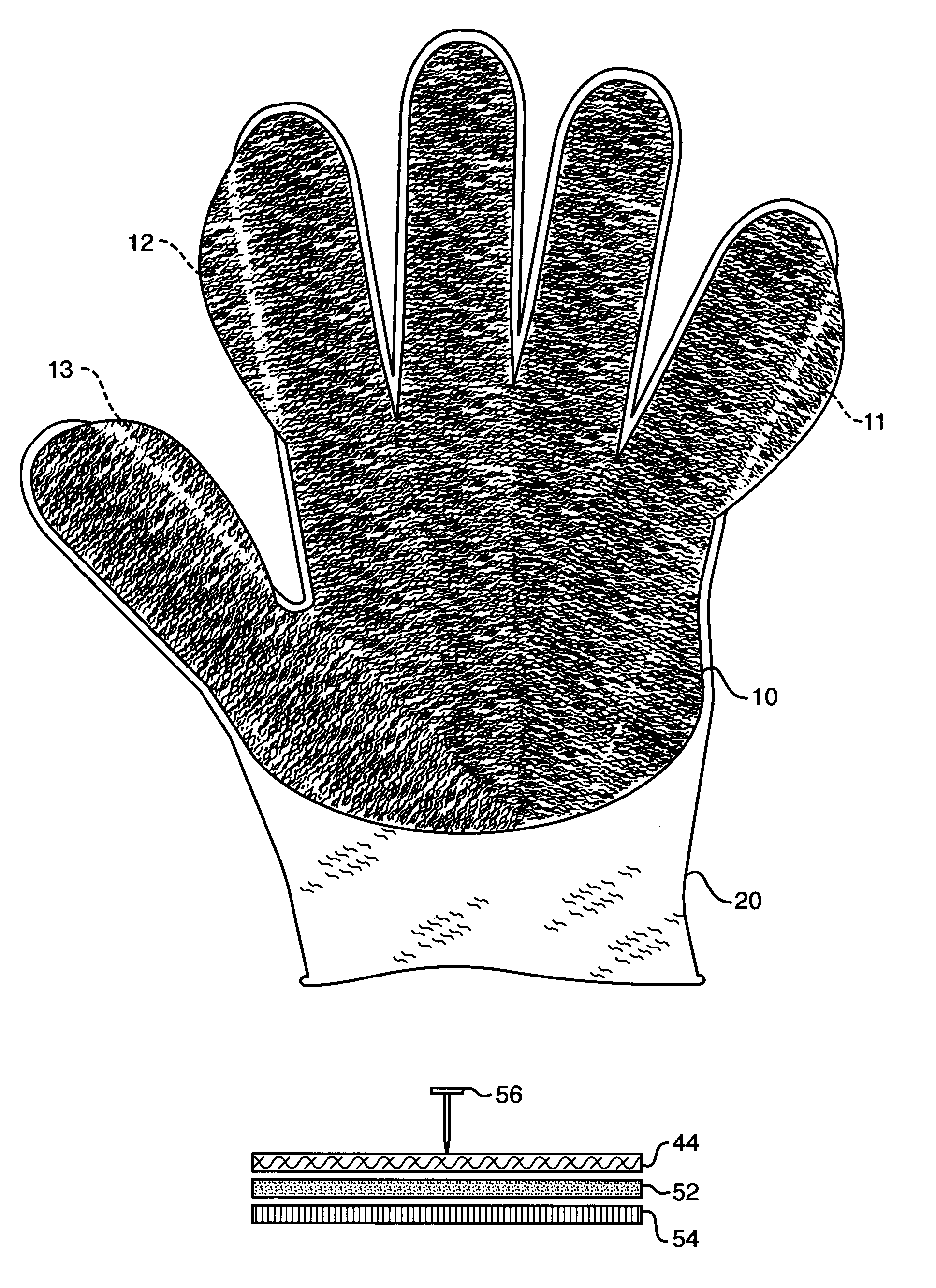Protective garment and glove construction and method for making same
a technology for protecting garments and gloves, applied in protective equipment, protective garments, weapons, etc., can solve the problems of no protection against puncture or cut, open knit fabric, no materials, etc., and achieve high dexterity, increase the overall composite puncture resistance, and high conformity
- Summary
- Abstract
- Description
- Claims
- Application Information
AI Technical Summary
Benefits of technology
Problems solved by technology
Method used
Image
Examples
Embodiment Construction
[0031]One embodiment uses a palm shaped liner made of a highly puncture resistant fabric described in U.S. Pat. Nos. 5,565,264, and 5,837,623 (hereafter referred to as TURTLESKIN™ brand fabric) combined with a light weight lisle knit cotton glove, manufactured by known methods using a thermoplastic web adhesive. An alternative embodiment would allow for the attachment of a TURTLESKIN™ brand fabric liner to a cotton or aramid or poly / cotton string knit glove. Attaching the TURTLESKIN™ brand fabric liner to the outside of these common textile shells would be an additional variant on these embodiments. A further unique embodiment utilizes a common baseball batters glove as the glove shell to provide a durable leather outer material for grip and abrasion resistance while adding the desired cut and puncture resistance provided by the highly puncture resistant TURTLESKIN™ brand fabrics. Further enhancements include the addition of fold over tabs at the fingertips as illustrated in FIGS. 4...
PUM
 Login to View More
Login to View More Abstract
Description
Claims
Application Information
 Login to View More
Login to View More - R&D
- Intellectual Property
- Life Sciences
- Materials
- Tech Scout
- Unparalleled Data Quality
- Higher Quality Content
- 60% Fewer Hallucinations
Browse by: Latest US Patents, China's latest patents, Technical Efficacy Thesaurus, Application Domain, Technology Topic, Popular Technical Reports.
© 2025 PatSnap. All rights reserved.Legal|Privacy policy|Modern Slavery Act Transparency Statement|Sitemap|About US| Contact US: help@patsnap.com



